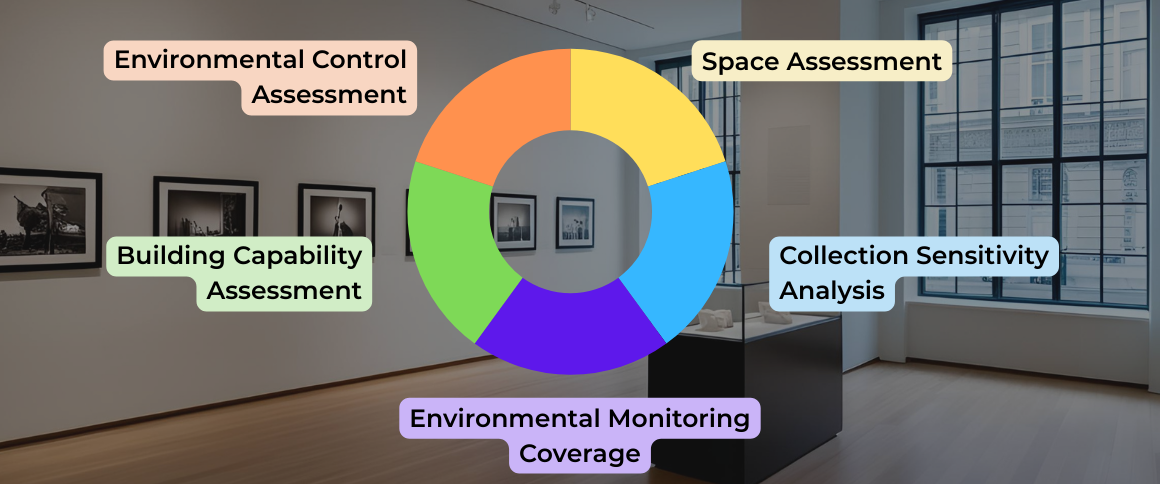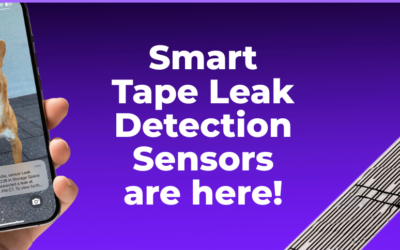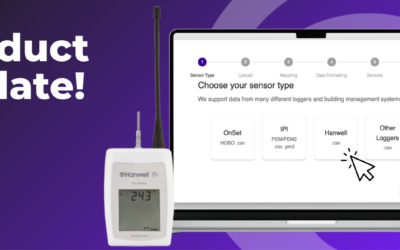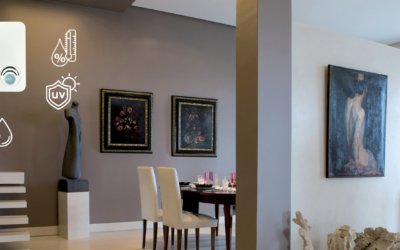Author: Wilma Bouwmeester ACR, Heritage Preservation Consultant at Sustainable Heritage Conservation.
About: Sustainable Heritage Conservation has advised museums, galleries and historic houses on collections care and the provision of suitable environments for some 30 years, and recently partnered with Conserv in the delivery of suitable environmental monitoring solutions.
The emerging climate crisis is urging us to become more sustainable while continuing to protect collections – sustainable approaches are at the core of what we do, such as focusing on ‘good’ rather than ‘best’ practice, as getting from ‘good’ to ‘best’ often requires disproportionate amounts of resources for a small increase in return.
The first step in environmental management is to know the specifics of your collection environment, by monitoring humidity, temperature, light, and UV radiation. Modern electronic monitoring systems, that pass data to the cloud where it is accessible through the features of the associated software, provide the foundation on which informed decisions are based.
Once this foundation has been laid, the focus is on sustainable ways of controlling the collection environment. Many are discovering that less can be more when it comes to environmental management, and this has led to the development of the ‘ultra-light’ approach. It was inspired by ultralight camping, where instead of simply replacing existing gear with lighter versions, you start from zero and pack what is absolutely essential only, and then in its lightest version. When applied to museum environmental management, it means questioning every aspect of your current approach and building up only what you truly need.
Decisions need to be made in all areas of museum management: collection de-growth and deaccessioning; physical storage organisation; and public expectations and assumptions.
For environmental control, a sustainable approach includes conducting risk assessments to determine the state and needs of your collections, implementing passive measures before considering active measures, and ensuring an equal and balanced approach between the needs of people and collections.
To help us with the process, there are five questions we need to ask ourselves.
1. Do all spaces need the same level of control?
Collections-focused spaces often prioritise relative humidity (RH) consistency, though temperature remains relevant.
Staff/visitor-centred spaces typically prioritise temperature for human comfort (and in many countries humidity will also be vital);
Shared spaces require a balanced approach that addresses both collections and human needs.
2. How much of the required environment is the building already able to provide?
Environmental monitoring will show what our current museum environment is, and how close it is to what we need in the various spaces. Ongoing and comprehensive monitoring is essential to understand the natural conditions of the building, the variations between different spaces, and the effects of changes made to control methods.
3. What are our environmental needs?
The approach to apply text-book recommendations for environments is now quite outdated. A sustainable approach is based on a combination of factors specific to your collection and context:
- How naturally sensitive is the collection and how fragile has it become
- How acclimatised has the collection become
- How big is the risk and impact of damage
4. Can we do it passively?
Once environmental monitoring has established baseline conditions, passive measures not requiring energy sources are preferred before considering active environmental control. A range of measures can be taken to make passive improvements and enhance stability. While some of these may require upfront investment, they significantly reduce long-term energy use and operational costs, making them an integral part of sustainable environmental management.
5. If active control is necessary, how little is enough?
If the building is in good condition and able to provide a decent degree of control, and a fairly wide RH band is OK for the majority of collections the majority of the time, then it is likely that any active plant for further control can be modest in size, and its default setting is ‘off’. It will need to be on only to nudge conditions back into the acceptable band.
Conclusion
By following a structured, tailored, and sensible approach to the provision of environmental conditions, we can design and implement good environmental control for collection preservation that is compatible with the requirements for people comfort, energy (and cost) efficiency, and broader environmental concerns for the planet.
Want to know how light you can make your environmental management?
Download our co-branded “Ultra-Light Environmental Management Assessment Tool” to begin evaluating your own approach and start your sustainable journey today.




